- MOE
- National Parks of Japan
- Ise-Shima National Park
- Characteristics
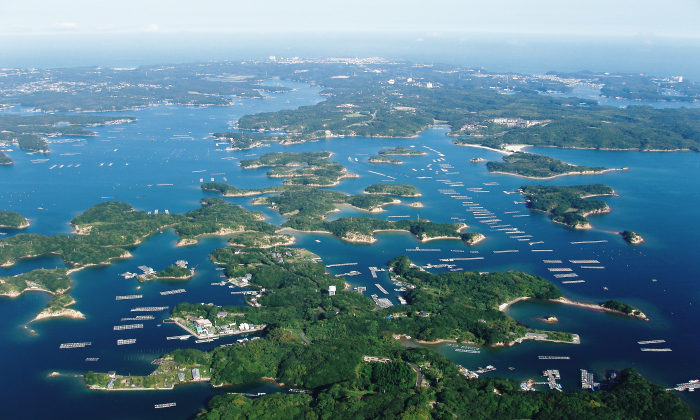
Ago Bay
Characteristics
Ise Jingu, a site where a long, splendid, multifaceted history unfolds.
Satoyama and Satoumi, a land of enrichment interweaved with the workings of people and nature.
Date of Designation: November 20, 1946
Area: 55,544 ha
Related Prefecture: Mie
Overview
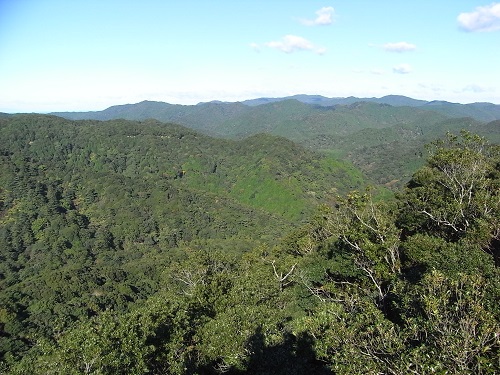
Kyuikirin (precinct forest)
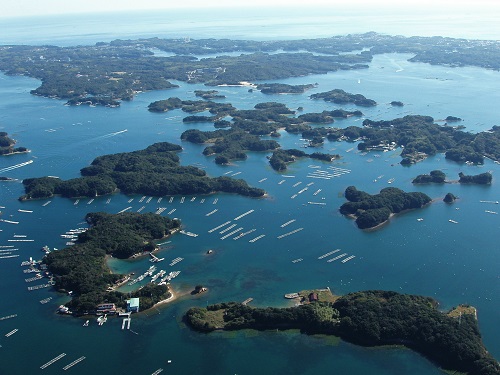
Ago Bay
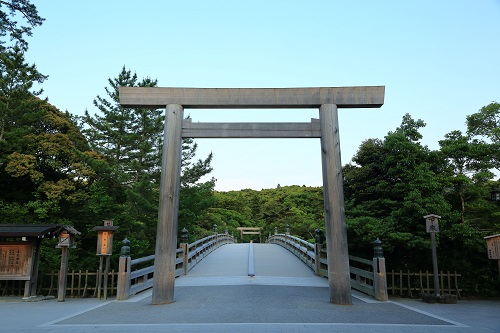
The Ujibashi Bridge of Ise Jingu. Photo by Jingushicho
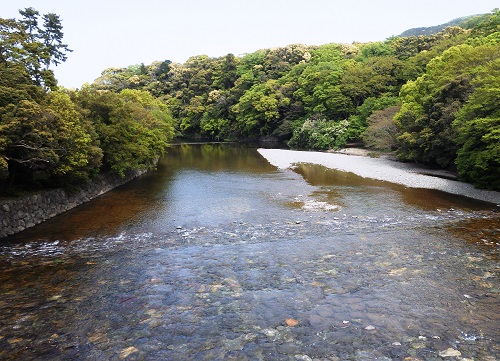
Isuzugawa River
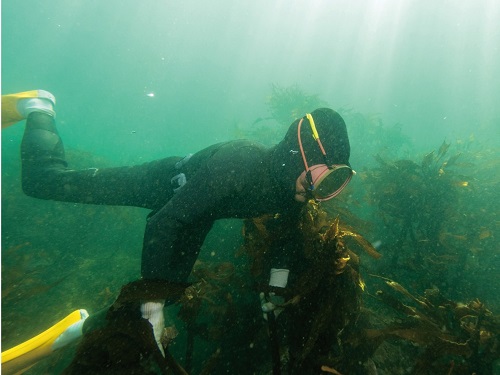
Ama (female diver)
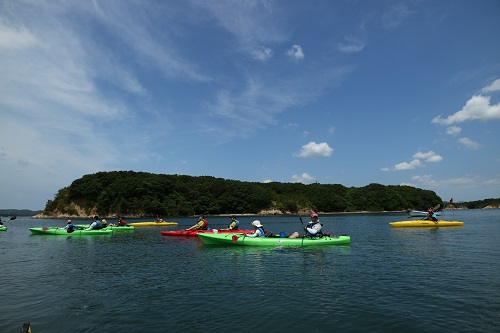
Sea kayak
Landscapes
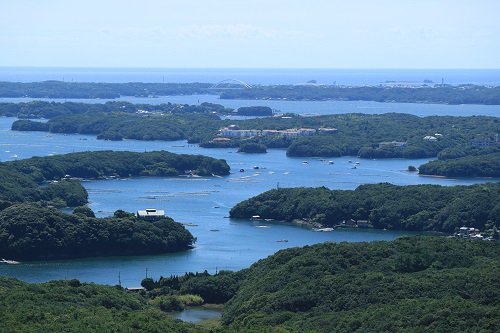
The ria coast in Ago Bay as seen from Yokoyama
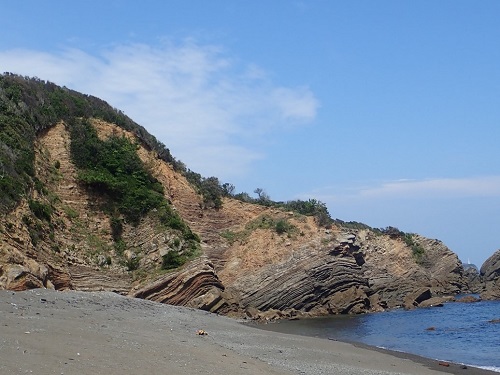
Striated rocks in Oisohama
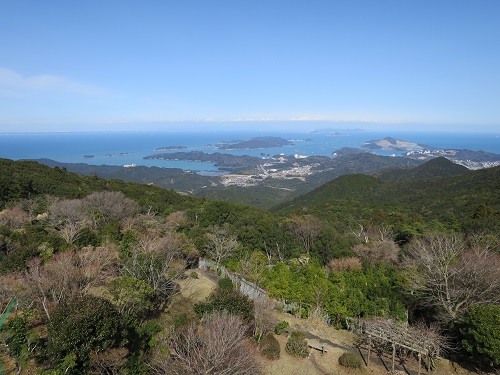
Toba Bay as seen from Mt. Asama View Point
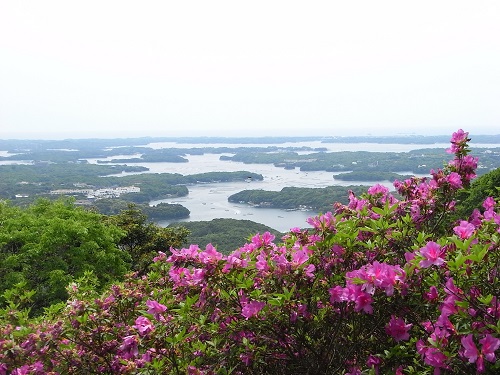
Blooming azaleas in Yokoyama View Point
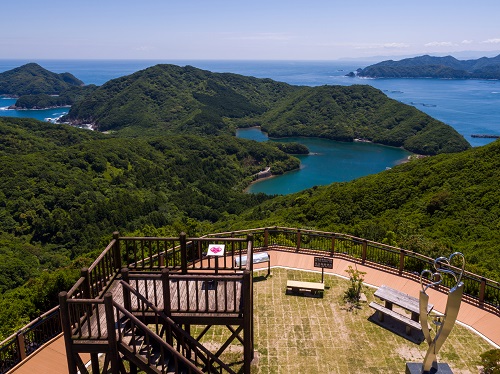
Mieshima View Point, Ugura Picnic Site
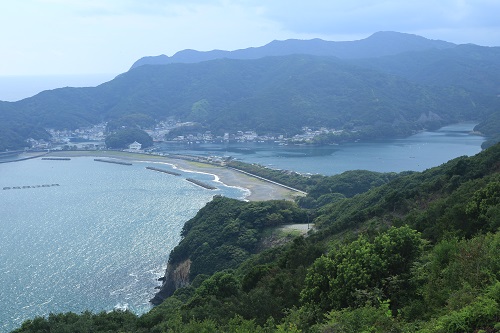
Oka Niwahama Beach as seen from Nankai View Point
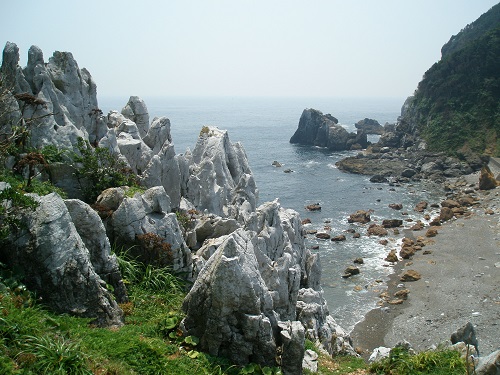
Limestone Karst in Kamishima Island
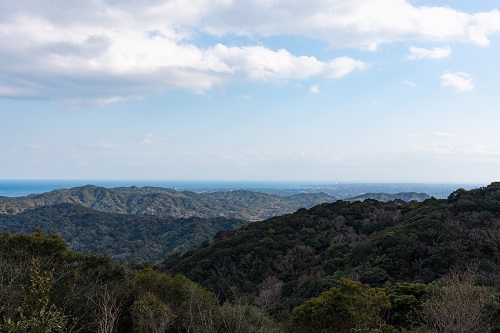
View from Mt. Aonomine
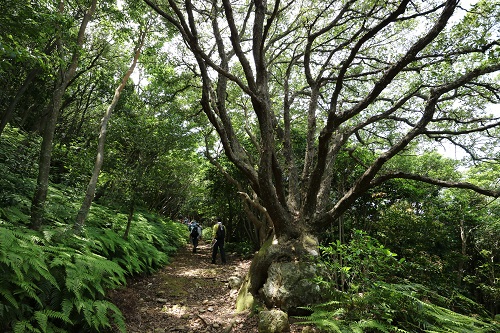
Trails in Mt. Aonomine
Plants
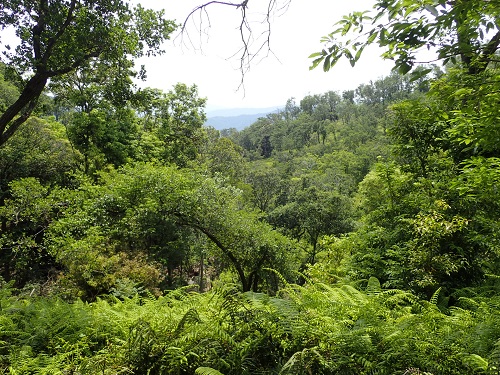
Evergreen broad-leaved trees (laurel forest)
In the Ise-Shima National Park, beautiful flowering plants can be seen in every season. In the early spring, pale purple kobanomitsuba tsutsuji (Rhododendron reticulatum), a species of azalea, bloom in a number of areas including the Yokoyama Picnic Site and Tomoyama Park.
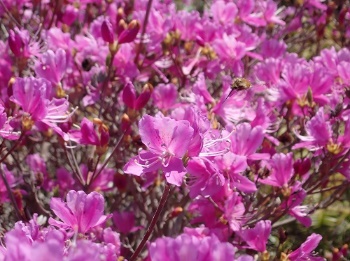
Kobanomitsuba tsutsuji (Rhododendron reticulatum)
There are seemingly endless sand beaches in Ise-Shima, such as Shima's Koshirahama and Hironohama. Interesting plants found only in beach areas grow here. Beaches are not generally suitable for plants, because the sea breezes shift sand, strong sunlight dries the plants out, and the salt content is very high. However, coastal plants are well adapted to growing in this environment. Poison bulb (Crinum asiaticum) is a large, one-meter high perennial grass with white flowers that bloom around July and August. Poison bulb has been used as a symbol on posters and stamps for a long time around the Ise-Shima National Park. Hamabo (Hibiscus hamabo) blooms yellow at the beginning of August at Gokasho Bay, Ago Bay, and Matoya Bay.
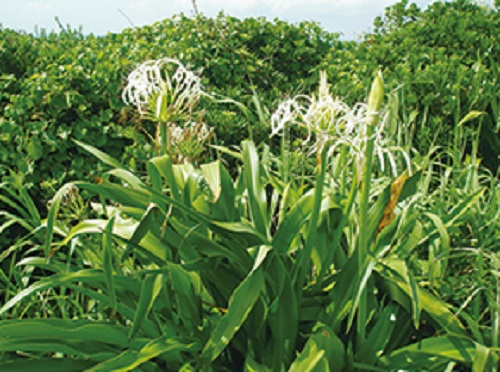
Poison bulb (Crinum asiaticum)
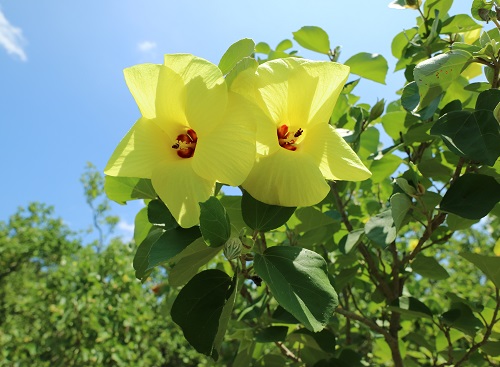
Hamabo (Hibiscus hamabo)
Shallow seas with depths of about 20 to 30 meters stretch from Ise Bay to Sakishima Peninsula in Shima City. Particular species of seaweed and seagrass grow here thanks to the sunlight reaching the bottom.
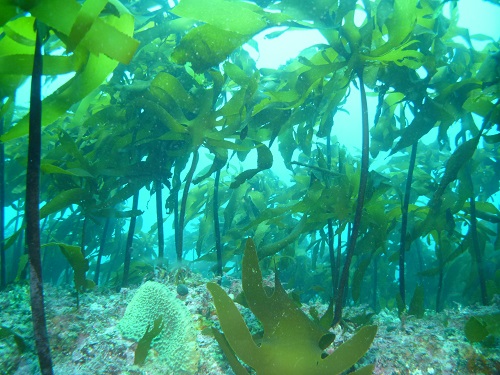
Seaweed beds of Kajime (Ecklonia cava)
Rare ecological phenomena can be seen in Ise-Shima National Park. On Mt. Oyama on Sugashima Island, the Japanese boxwood (Buxus microphylla var. japonica) boasts red leaves in winter. These form a thick, red carpet on the ground and create a stark contrast to the blue sea. This plant is known as beni-tsuge in Japanese, the change of this normally evergreen plant to such a vibrant red color is truly beautiful. There are only a few places in Japan where one can see this wonderful sight.
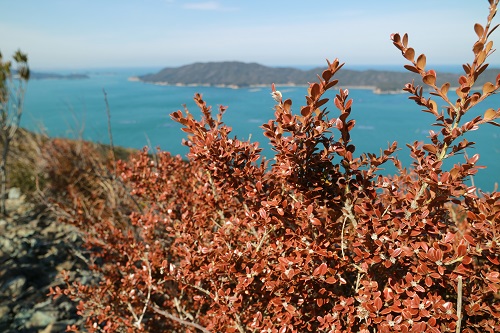
Red leaves of Japanese boxwood (Buxus microphylla var. japonica)
Animals
Along Ise-Shima National Park's coastline, rocky reefs, seaweed beds, tidal flats, and beaches provide habitats for a range of wildlife. The rocky reefs that run from the edge of the beach to the ocean floor are home to abalone and the Japanese spiny lobster, which hide in the gaps between the rocks. Seaweed beds provide nourishment and shelter for many sea creatures, making it a great area for fishing.
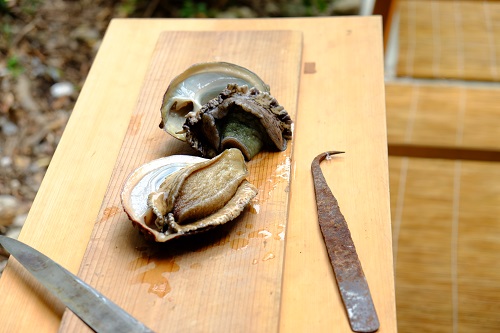
Abalone
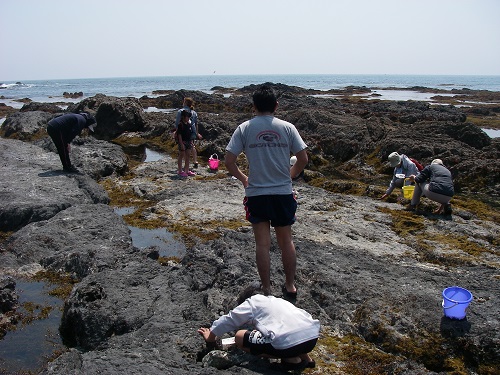
Tidepooling
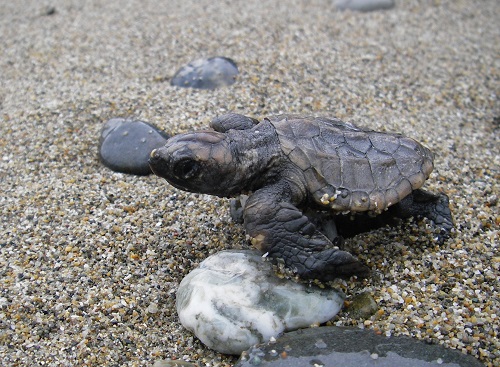
Loggerhead turtle (Caretta caretta)
Various seabird species feeding on fish and crustaceans are found near the coast. Great cormorants (Phalacrocorax carbo) can be seen all year round. These black birds often gather in large numbers around Ise Bay and large river estuaries. The sight of flocks with hundreds of birds is spectacular. Ospreys (Pandion haliaetus) are often seen in Ise-Shima during winter. They glide over the sea until they spot their prey, then dive to catch fish in their sharp talons.
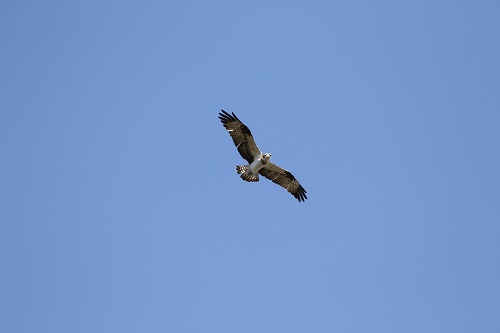
Ospreys (Pandion haliaetus)
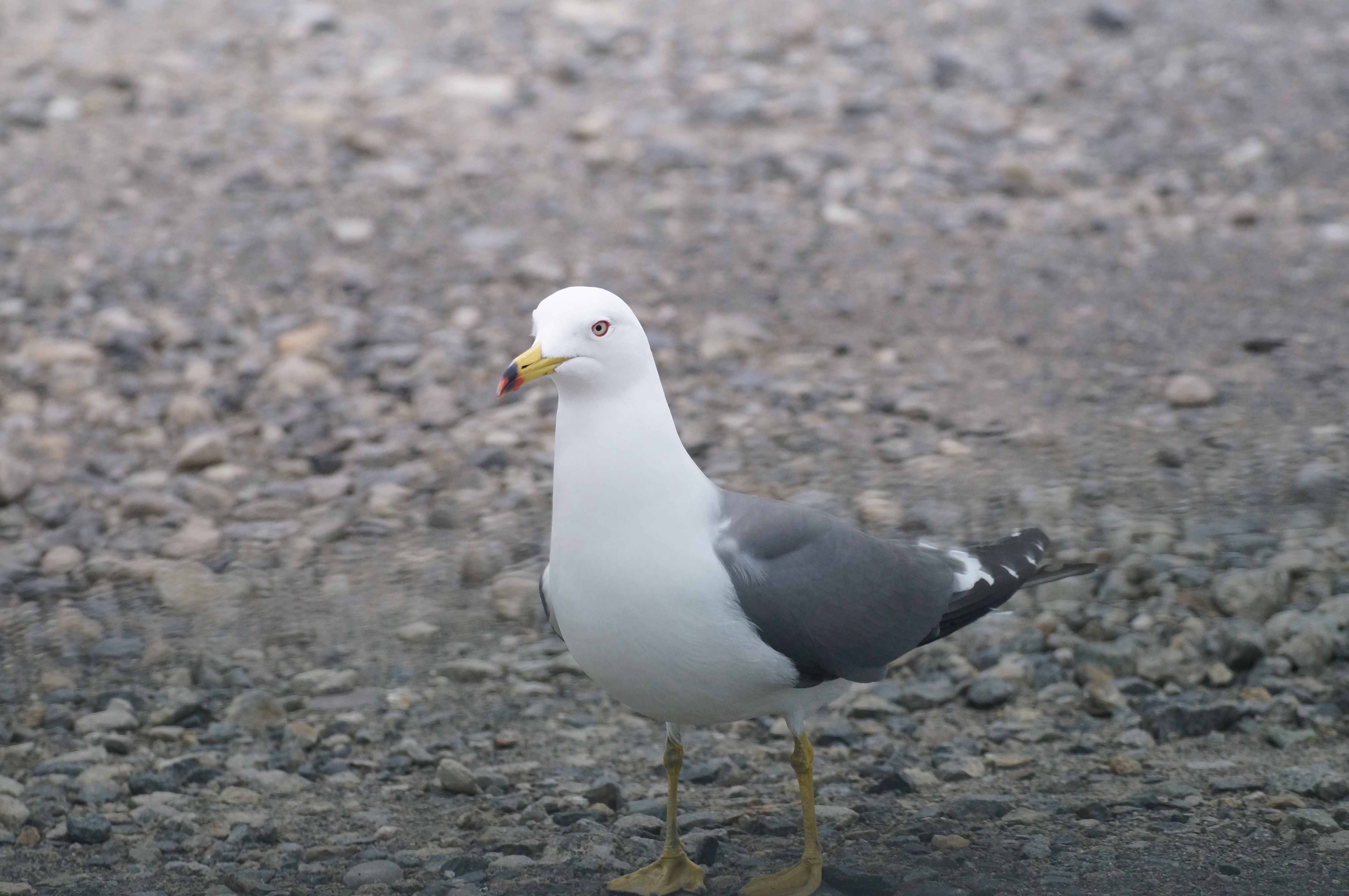
Black-tailed gulls (Larus crassirostris)
Ise-Shima National Park features a wide range of environments, allowing many species of insects that can be found only in specific habitats to thrive. Along the shore, a species of Hydrophilidae and rove beetles (Staphylinidae) can be spotted feeding on seaweed that has been washed onto the beaches. The brackish waters of the estuaries and tidal flats provide a habitat for rare insects such as the four-spot midget (Mortonagrion hirosei), a damselfly which can live in saline marshes, as well as small diving beetles. In Minami-Ise's wetlands, more than 50 species of dragonfly have been recorded. They include hachou-tombo (Nannophya pygmaea), one of the smallest dragonflies in the world.
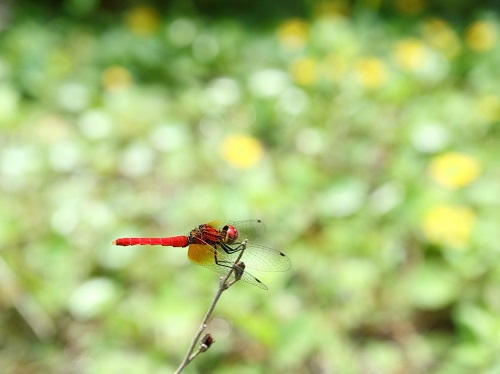
Hachou-tombo (Nannophya pygmaea)
The mountains of Ise-Shima National Park are inhabited by many animals, including deer, wild boar, and Japanese macaque monkeys. Some of these animals are considered pests due to the damage they do to crops and are subject to control programs. In satoyama areas, where people work to conserve local ecosystems by using environmental resources sustainably, a wider range of animals can be spotted. These include raccoon dogs, hares, foxes, and badgers.
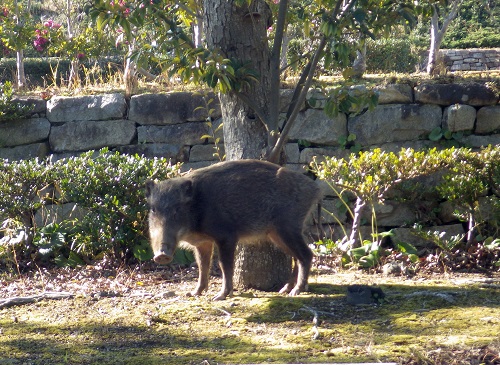
wild boar
Activities
Ise-Shima is famous for its seafood, and there are many opportunities for fishing and related activities for visitors. Fishing boat tours of Ago Bay allow visitors to catch fish such as horse mackerel, with chances of catching improved with expert advice from the boatmen. Similar tours are offered on Sugashima Island. From January to March, wakame seaweed harvesting excursions are available. In Minami-Ise, visitors can try other fishing-related activities, such as rides on fishing boats and feeding farmed sea bream.
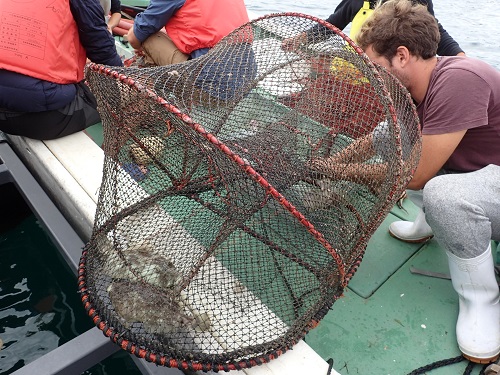
Fishery experience
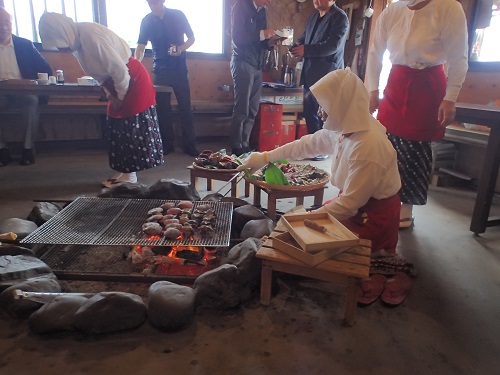
Ama hut experience
From mid-April to September, visitors can enjoy many water activities in the calmer seas of the bays. Going on a sea kayak or a paddleboard tours allows visitors to explore the inlets along the coastline and some of the many islands. The fully guided sea kayak tours are suitable for beginners and families. Some places also offer sea kayak tours at night, when the moon and stars over the sea create a romantic atmosphere.
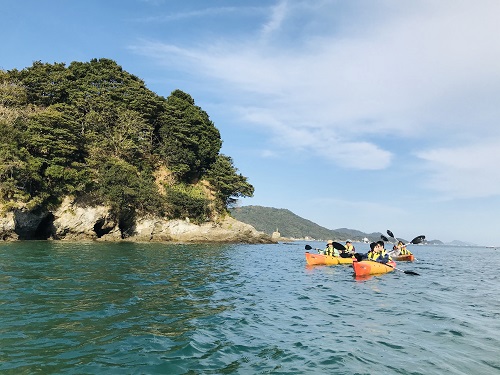
Sea kayak
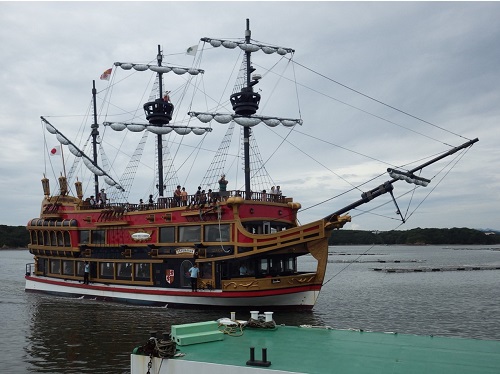
Pleasure cruise
Ise-Shima boasts numerous hiking trails, which lead visitors to the beautiful scenery of the surrounding bays and mountains. Trails suitable for beginners include the Yokoyama Picnic Site, with its many viewpoints offering vistas across Ago Bay. Surrounded by a large number of blossoming cherry trees in spring, Mt. Otonashi's promenade looks out across Ise Bay towards Aichi Prefecture's Atsumi and Chita peninsulas. Hikers who want to walk further can try climbing to the top of Mt. Asama, Ise-Shima National Park's highest mountain. There are also guided walking tours of Shima's rocky coasts and historical fishing villages.
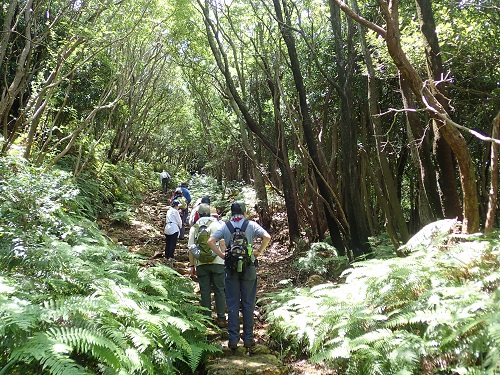
Hiking
There are also workshops where visitors can try extracting pearls and using them to make their own accessories or necklaces.
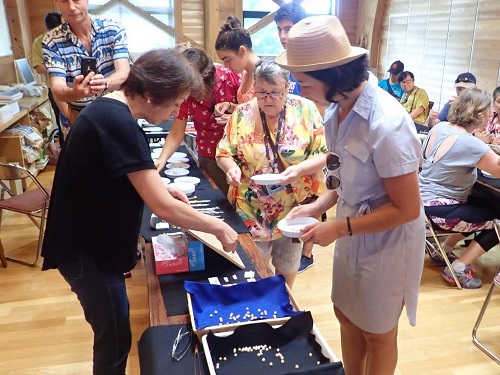
Pearl accessory workshop
Food
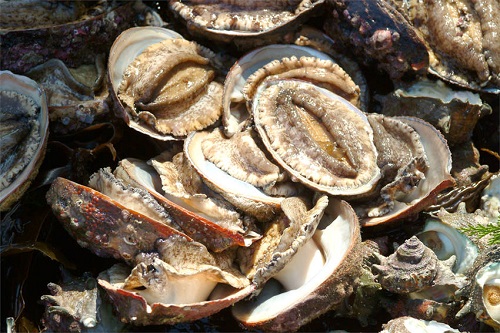
Abalone. Photo by Ito Yoshimasa
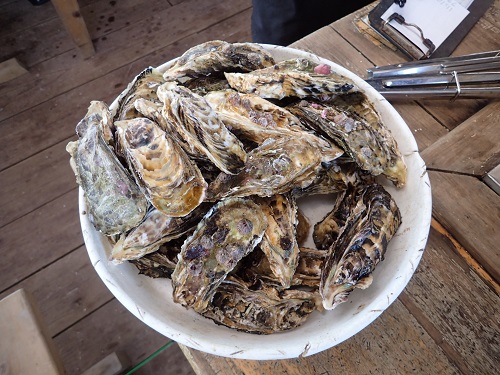
Oysters
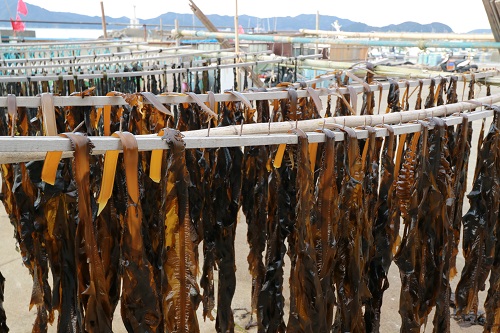
Drying wakame (a species of brown algae)
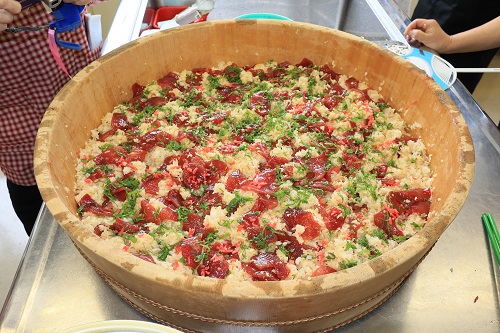
Tekonezushi
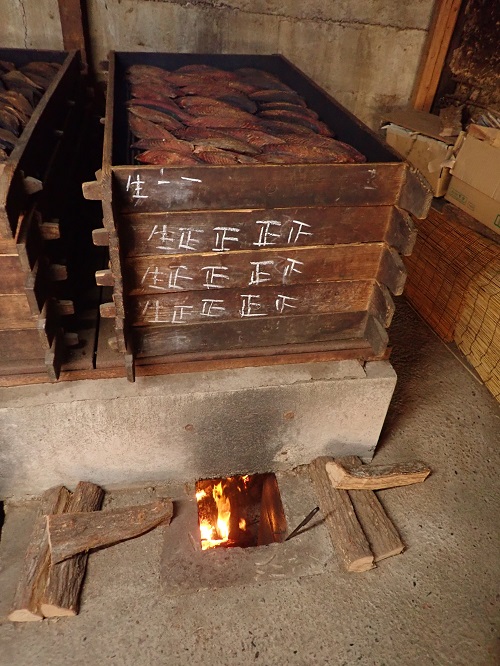
Smoking dried bonito
History
Ise-Shima has a long and interesting history of people whose lives have been shaped by the sea. Excavations have unearthed 3,000-year-old tools for taking abalone. There are also records of seafood being traded by Ise-Shima's Daio Town dating from 745 CE. With its rich natural environment, bountiful harvests, and fine seafood, the area was identified as a miketsukuni. These were regions of Japan responsible for providing food to the imperial court. In the Manyoshu, a collection of classical poems compiled around the eighth century, Wakasa (now Fukui prefecture), Awaji Island (in modern Hyogo), and Ise-Shima are listed as the three regions bestowed this honor. As the jinja (Shinto shrine) complex dedicated to Amaterasu-Omikami, the most important deity in Japan's native religion of Shinto, Ise Jingu is regarded as the spiritual center of the country. Throughout history, Japanese people have been moved to visit Ise Jingu at least once. The improvement of roads in the Edo period (1603-1867) allowed significant numbers of people to visit the sacred site. This increase in visitors to Ise Jingu led to the establishment of many teahouses nearby. The atmosphere of eras in which people made the pilgrimage lingers today along Okageyokocho Street, opened in 1993, which is lined with reconstructions of Edo period buildings. Located near Ise Jingu's Naiku, the street has traditional sweet and souvenir shops.
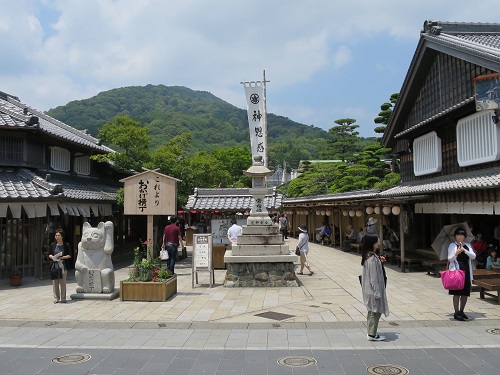
Okageyokocho Street
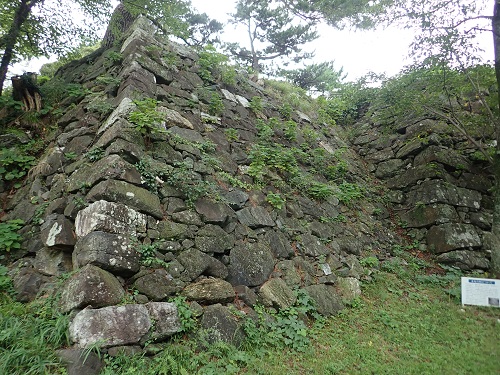
Shiroyama Park
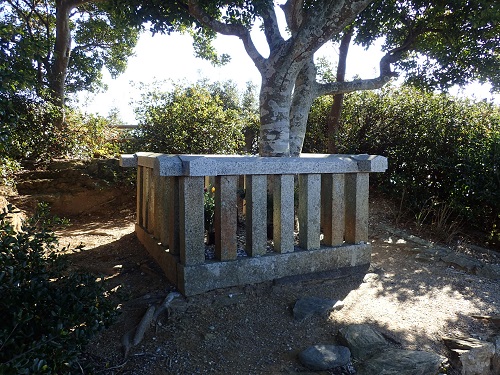
The Grave of Kuki Yoshitaka (head mound)
During the era of peace brought about by the Tokugawa Shogunate (1603-1867), Ise-Shima and its ports prospered through trade. This brought wealth to the area and enhanced standards of living, as well as starting an exchange of culture with Osaka. Such exchange is evident in traditions such as Anori Bunraku puppet theater, which was inspired by a similar form of entertainment popular in Osaka in the eighteenth century. The Shogunate collected taxes from the various domains in the form of rice, and Ise-Shima flourished as an important port for rice ships en route to the capital Edo (now Tokyo).
Ise Jingu (Shinto Shrine)
Ise Jingu is the most important jinja (Shinto shrine) complexes in Japan. Japan's indigenous Shinto faith is based around paying respects to kami, deities that reside in the natural world, in every being and every person. Ise Jingu, officially known as "Jingu," is composed of 125 jinja, centered around the Naiku and Geku. These are dedicated to Amaterasu-Omikami (the sun deity) and Toyo'uke-no-Omikami (the deities of food, clothing, and shelter) respectively.
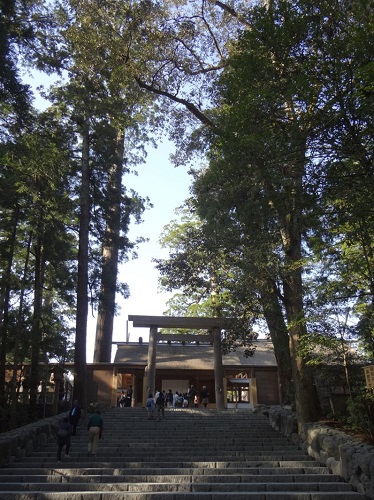
Naiku
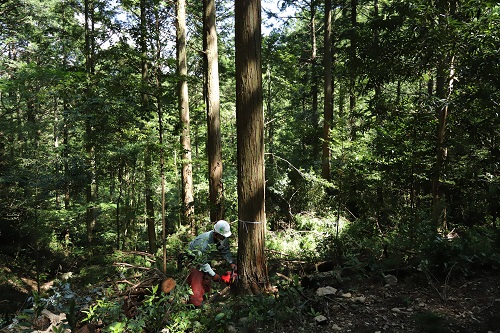
Shikinen Sengu in Izawa-no-miya, one of the associated shrines of Ise Jingu
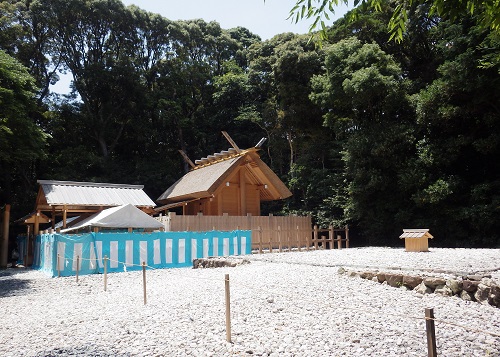
Forest management in Kyuikirin (precinct forest of Ise Jingu). Photo by Jingushicho
Culture
For thousands of years, the sun deity Amaterasu-Omikami has been worshipped in Japan as a symbol of the sun, one of nature's blessings essential to life. As Japan's most sacred jinja (Shinto shrine) complex, Ise Jingu in Ise-Shima lies at the center of this belief. Today, Ise-Shima's culture is still characterized by ancient rituals and festivals giving thanks for harvests and catches. These festivals are held in and around Ise Jingu. One of them, Ise Jingu's Kanname-sai festival, celebrates the offering of the first rice grown every October. Fishermen and female divers known as ama visit shrines and temples to pray for safety at sea. Ise Jingu's associated shrine, Izawa-no-miya, is just one of the places of worship where fishing and agricultural communities can receive this blessing. Lively festivals celebrate people's health and the harvests.
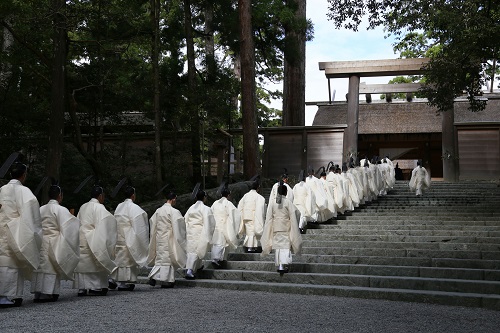
Kanname-sai. Photo by Jingushicho
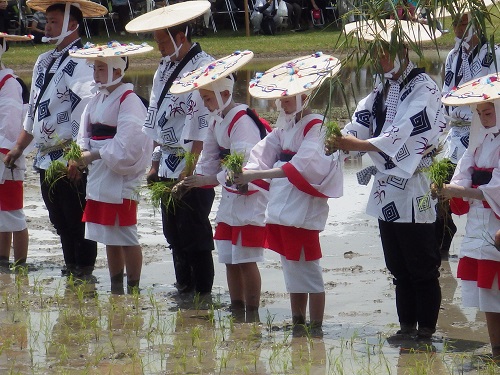
Rice planting festival in Izawa-no-miya
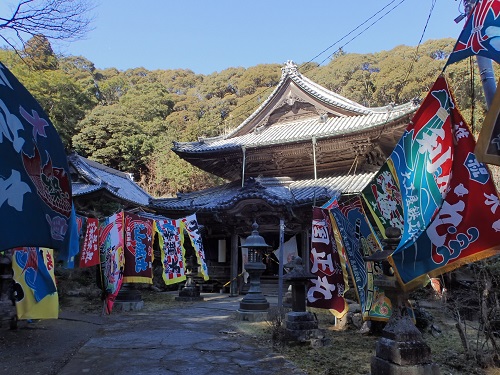
Mifune Festival at Shofukuji Temple on Mt. Aonomine
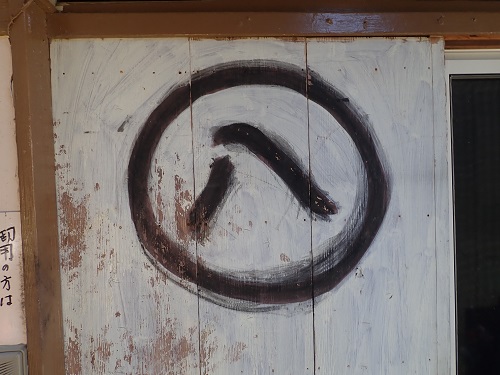
Maruhachi mark
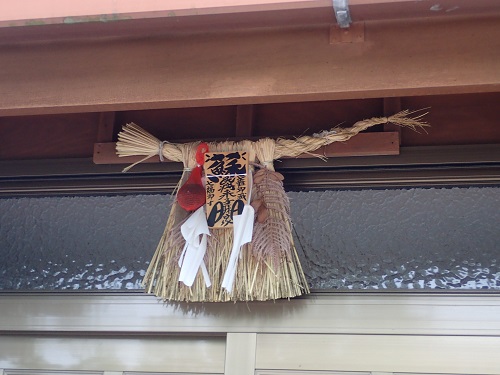
Shimenawa
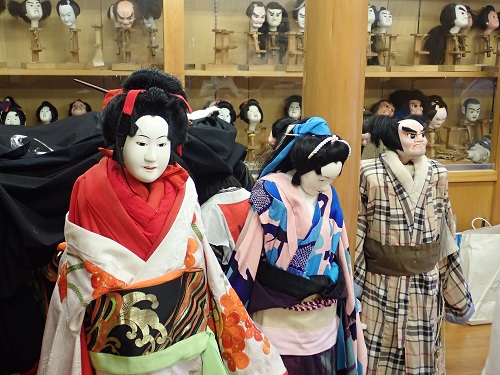
Anori Bunraku, Japanese puppet theater
Ama (Female Diver)
Ama are female divers who harvest a wide variety of seafood from the ocean floor, including abalone, shellfish, and various types of seaweed. Ama are found only in Japan and Korea.
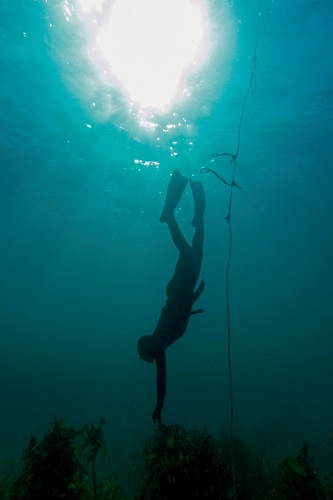
Diving Ama
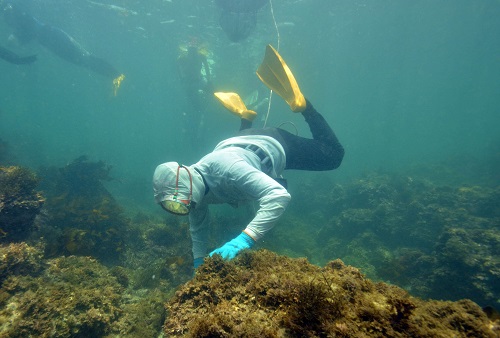
Ama fishing
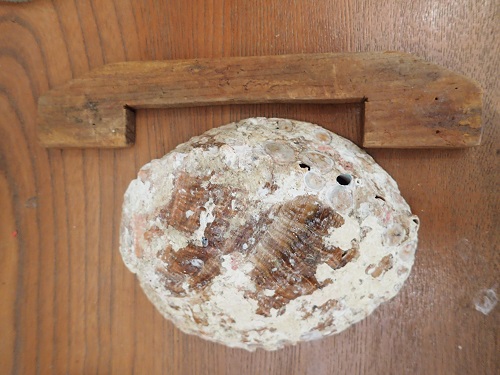
Tool of measuring an abalone
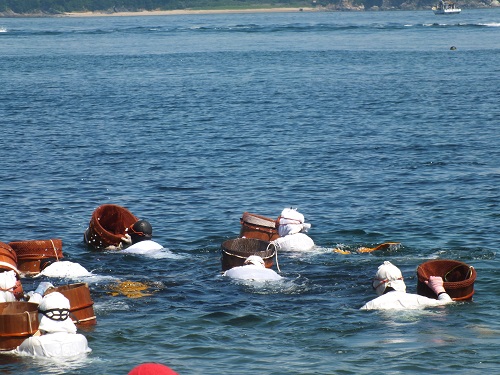
Shirongo Festival
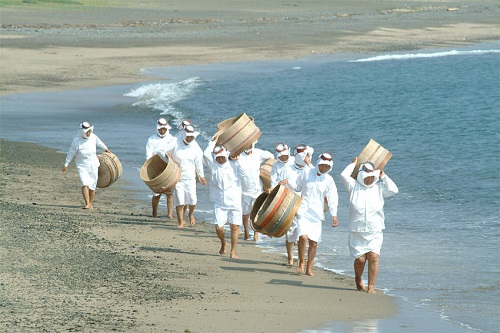
Ama in traditional wear. Photo by Ito Yoshimasa
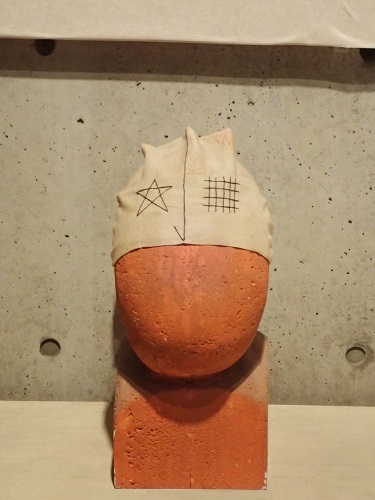
Traditional symbols of seiman and doman
Pearls
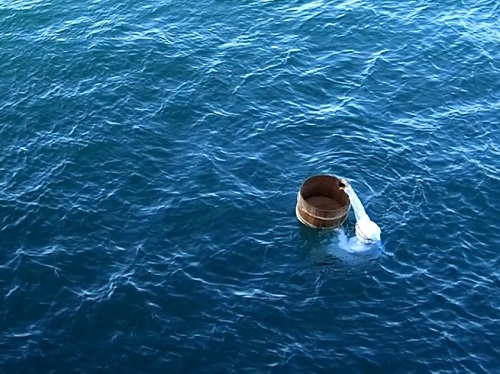
Performance of pearl oyster catching by ama divers
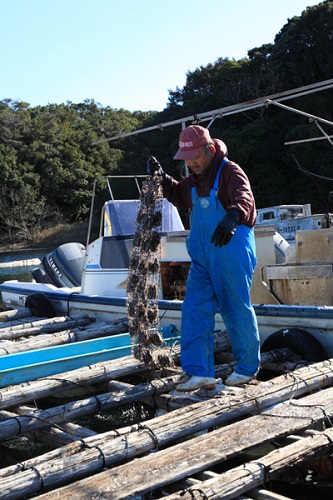
Harvesting pearl oysters
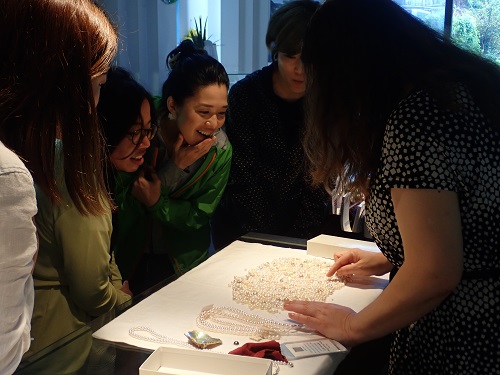
A pearl shop in Ise-Shima
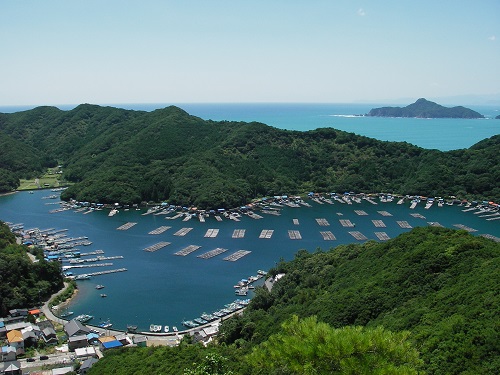
Pearl rafts floating in a calm bay
*This page includes the texts created by the Japan Tourism Agency.
